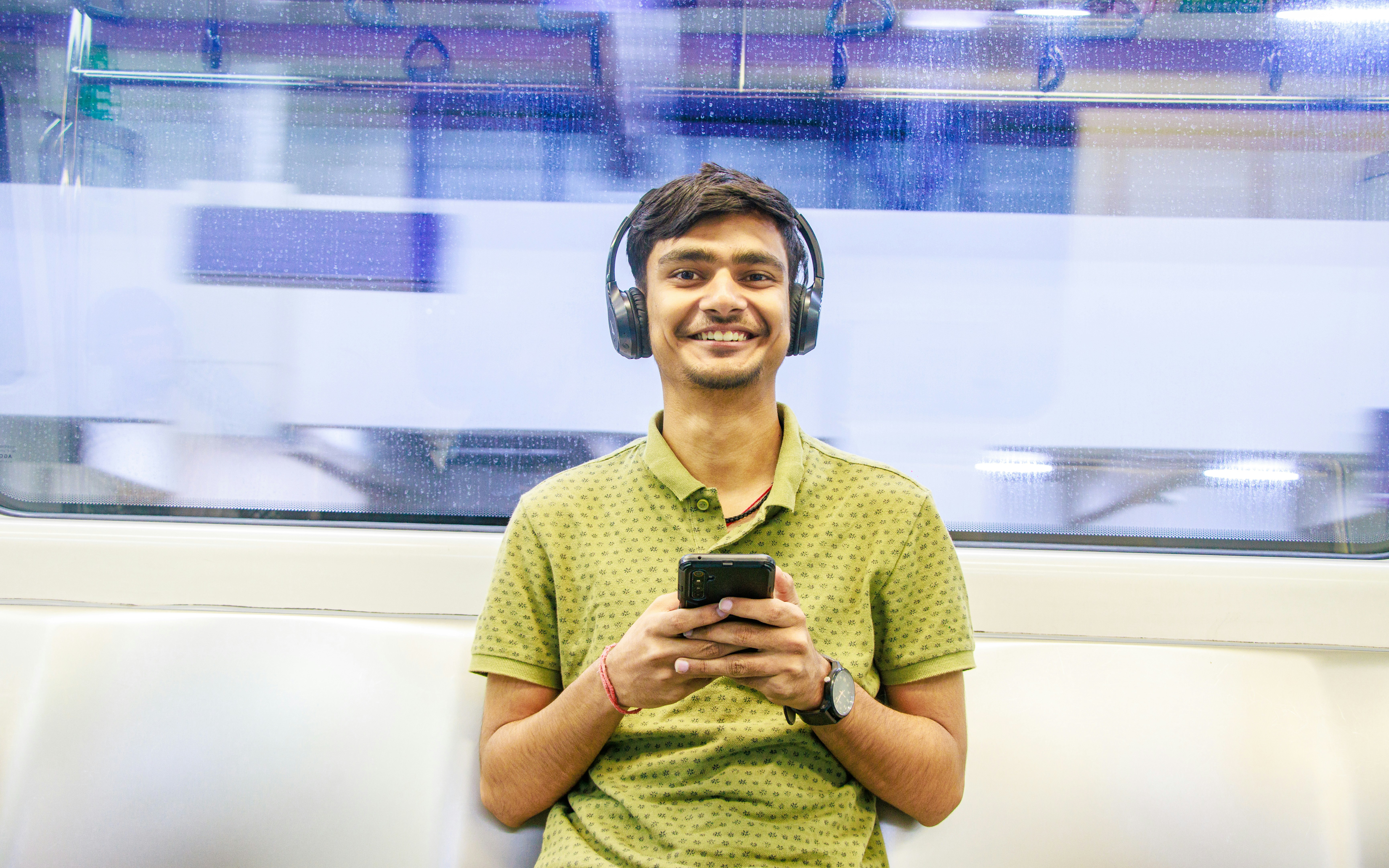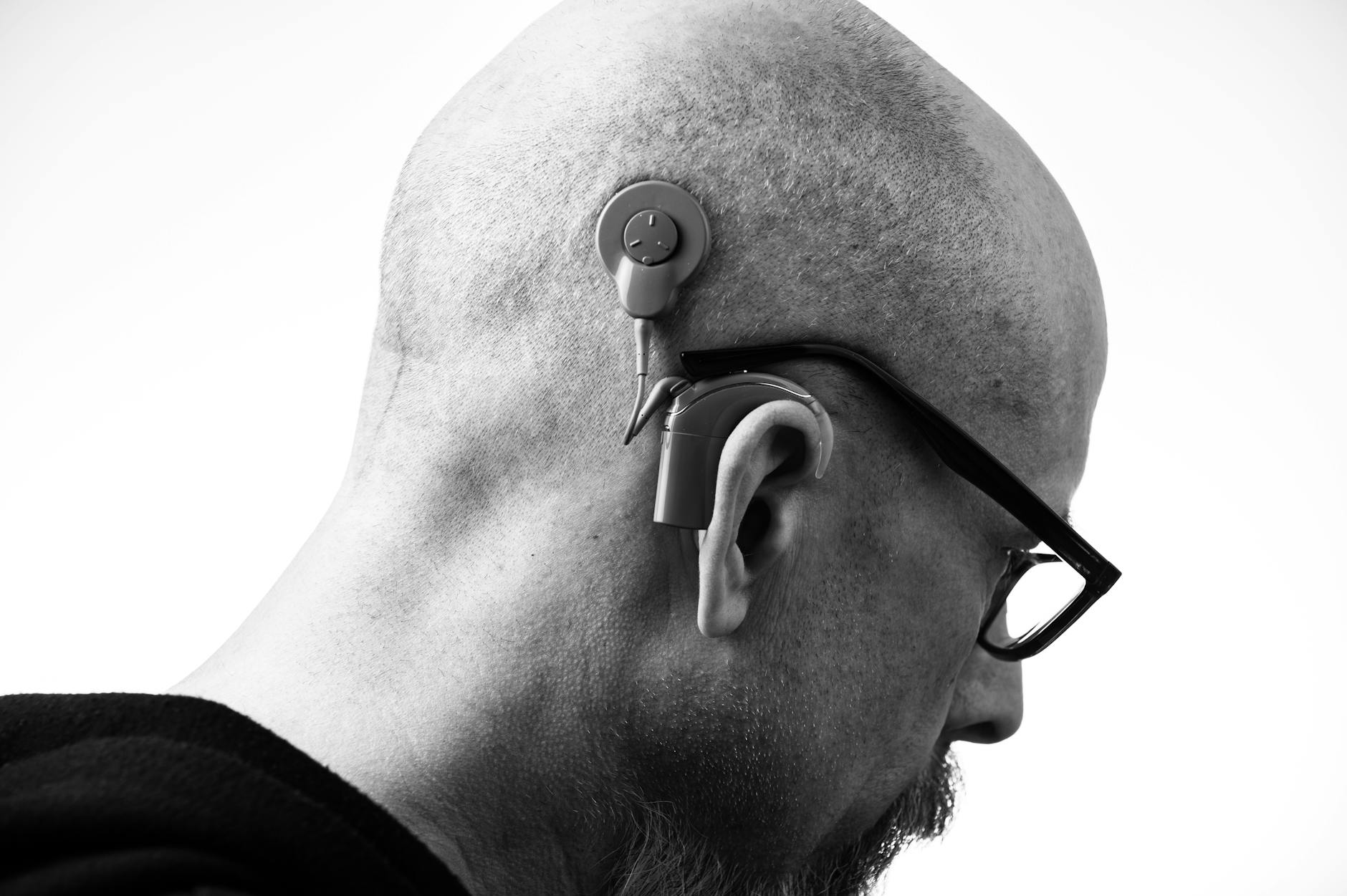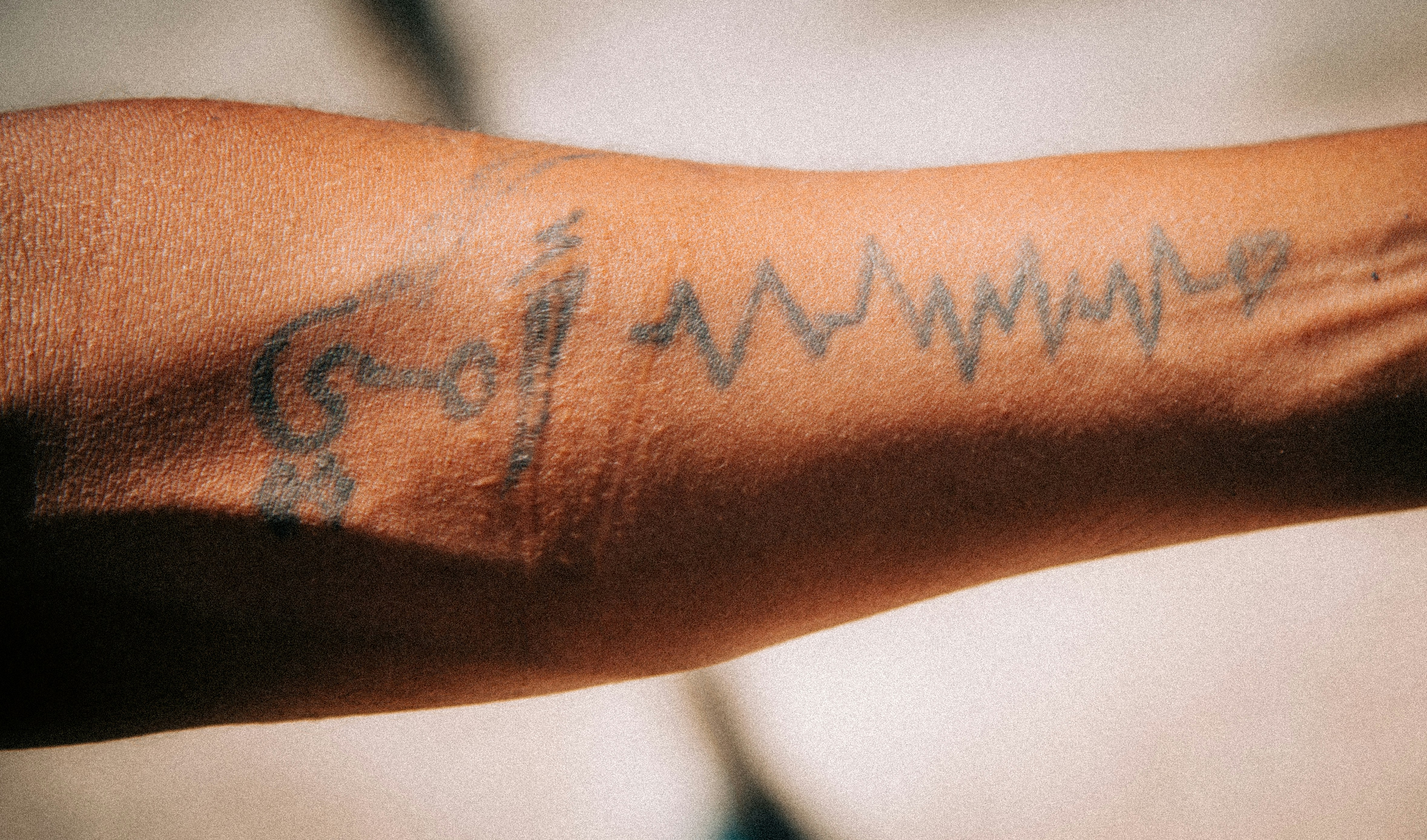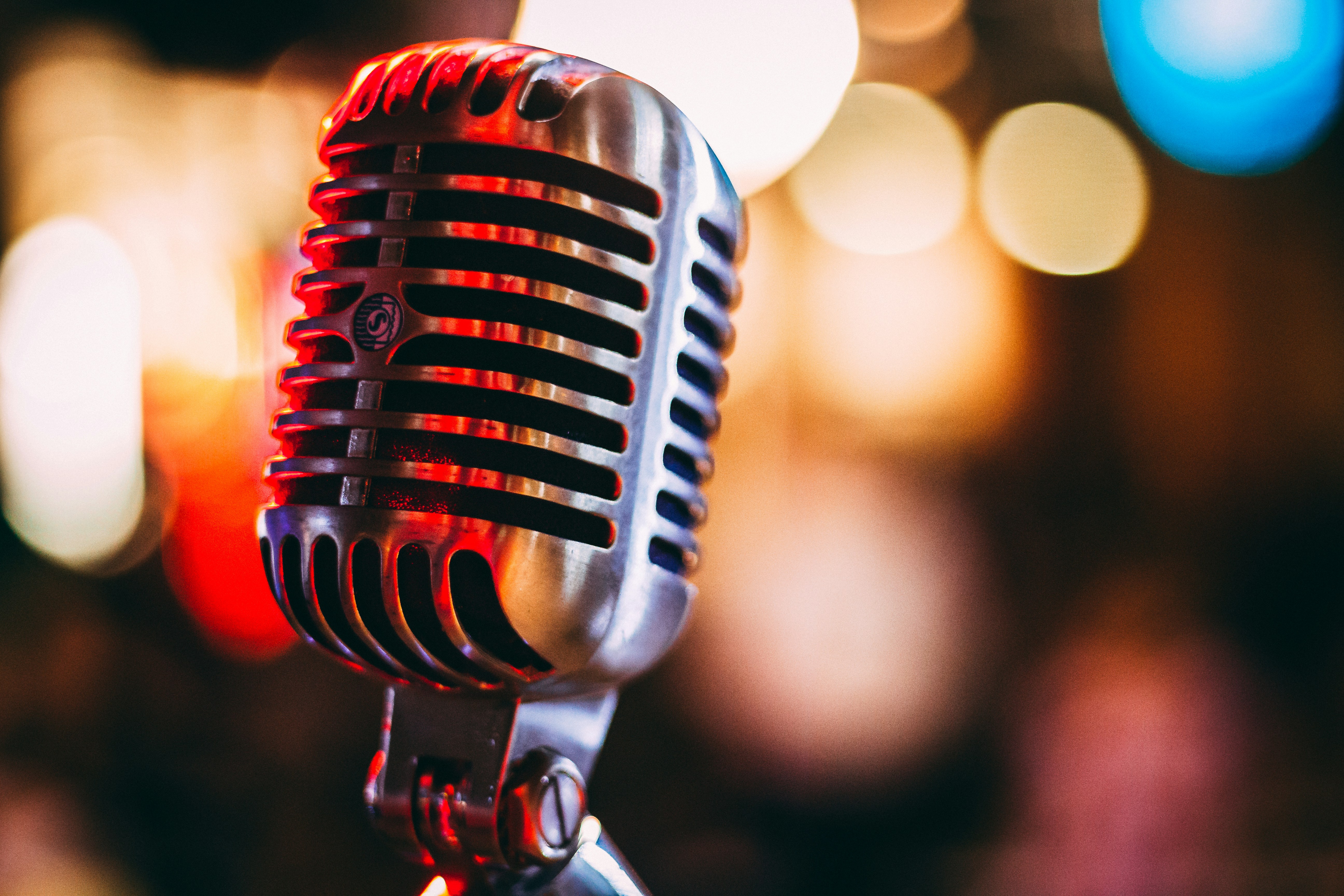Imagine walking into an airport, tapping your phone, and hearing the gate announcements directly in your hearing aids—clear, private, and without extra gear. That is the promise of Auracast, powered by Bluetooth LE Audio. Here’s what it means for you and how to prepare.
The short version
- Auracast is a new broadcast audio feature in Bluetooth LE Audio that lets venues stream directly to many listeners at once—including compatible hearing aids, cochlear implants, earbuds, and phones.
- It can make announcements, TVs, classes, and tours far easier to follow without neckloops or borrowing equipment.
- You’ll need LE Audio–ready devices: a newer smartphone and hearing aids or implants that support Bluetooth LE Audio and LC3. Not all 2023–2025 models do; confirm with your audiologist or manufacturer.
- Hearing loops aren’t going away. For the next few years, expect a mix: some places will have loops, some Auracast, a few both.
- Practical next steps: check device compatibility, keep telecoil access if you use loops, and try Auracast at home with a small LE Audio transmitter when you’re ready.
What is Bluetooth LE Audio—and where does Auracast fit?
Bluetooth LE Audio is the next generation of Bluetooth sound. It brings better efficiency, higher quality at lower bitrates, and smarter features for hearing devices. One of those features is Auracast, a way to share or broadcast audio to an unlimited number of nearby listeners.
Key terms in plain English
- LE Audio: New Bluetooth audio built on Bluetooth Low Energy (LE) radios for improved power use and reliability.
- LC3: The new audio codec for LE Audio—clear sound at lower bitrates to save battery and reduce dropouts.
- Multi-stream: Your left and right hearing aids can receive perfectly synchronized streams (helpful for clearer, more stable stereo and smoother handoffs between devices).
- Auracast broadcast audio: Public or private audio shared from one source to many listeners nearby. Think “listen to TV 7,” “Gate 12 boarding,” or “Tour Group B—English.”
Why Auracast could be a big deal for hearing
For people who struggle with speech in noise—or who rely on assistive listening—public sound is often the hardest part of daily life. Auracast changes that by putting the audio stream into your ears directly, bypassing room acoustics and background noise.
What that can look like:
- Airports and train stations: Hear announcements clearly without standing under a speaker.
- Gyms and bars: Tune into the TV you want to hear, even from across the room.
- Classrooms and lecture halls: Stream the instructor’s microphone, not the echoey room.
- Museums and tours: Join the right language channel or group with a tap.
- Workplaces and conferences: Follow presentations, panels, and huddles with less strain.
Because Auracast is part of mainstream Bluetooth, the same system can serve people with hearing aids, cochlear implants, and the general public with compatible earbuds—lowering barriers for venues and boosting availability.
How it works in real life
When a venue installs an Auracast transmitter, it creates a labeled broadcast, like “Courtroom Audio,” “Treadmill Row 3,” or “Gate B4.” Your phone or hearing aids scan for broadcasts and let you join the one you want. In many cases, you’ll use your phone as an assistant to discover and select the stream; your hearing aids then receive the audio directly.
Joining a broadcast: the typical flow
- Open your phone’s Bluetooth or a venue app to view nearby Auracast broadcasts.
- Select the broadcast you need (some may be public; some may require a password provided by the venue).
- Start listening through your hearing aids, implants, or earbuds. You can adjust volume and sometimes balance or language from your device.
Note: The exact experience depends on your phone, hearing aids, and the venue’s setup. Some manufacturers may provide dedicated apps or shortcuts. As this rolls out, workflows will get simpler.
LE Audio vs. today’s Bluetooth: what’s actually better?
- Audio quality: LC3 delivers clearer sound at lower bitrates than the older SBC codec, often with fewer artifacts at low bandwidth.
- Power efficiency: LE Audio can extend hearing aid battery life for streaming compared with classic Bluetooth in many cases.
- Latency: Designed for more consistent, low-latency audio—helpful for lip-sync on TV and clearer video calls.
- Reliability: Multi-stream support helps keep both ears synced and reduces dropouts in crowded radio environments.
- Scalability: Auracast supports many listeners at once without pairing, unlike point-to-point Bluetooth streaming.
Auracast vs. hearing loops (telecoils)
Hearing loops send audio through a magnetic field that telecoil-equipped hearing aids pick up. They are proven, widely used, and beloved—especially in theaters, houses of worship, and government buildings.
How they compare
- Availability: Loops are already installed in many places. Auracast is emerging now and will expand over the next few years.
- Devices: Loops require a telecoil; Auracast requires LE Audio support. Some hearing aids offer both.
- Audio routing: Both deliver audio directly to your hearing devices, improving signal-to-noise.
- Flexibility: Auracast can offer multiple channels (e.g., different TVs or languages) at once. Loops usually provide a single channel per space.
- Setup for venues: Loops require physical wiring and calibration; Auracast uses Bluetooth transmitters and signage. Each has costs and technical requirements.
Bottom line: It’s not either/or—at least not yet. Keep telecoil access if you rely on it, and layer Auracast in when your devices and local venues support it.
What you’ll need to use Auracast
- Hearing devices: Hearing aids or cochlear implants that support Bluetooth LE Audio (LC3) and, ideally, Auracast broadcast audio. Check your model’s spec sheet or ask your audiologist.
- Phone or tablet: A device with Bluetooth 5.2 or newer and LE Audio enabled. Many 2023–2025 Android flagships support LE Audio; iOS support varies by model and software version.
- Venue or transmitter: A public place with Auracast installed, or a home transmitter for TV/audio.
Compatibility is the biggest hurdle right now. Even if your phone says “Bluetooth 5.2,” manufacturers must enable LE Audio in software. Likewise, some hearing aids have the hardware but need firmware updates. Your audiologist can confirm what your devices can do now and what updates are planned.
Use cases you can try at home
- TV and movies: Pair a small LE Audio/Auracast transmitter to your TV and stream directly to your hearing aids. Expect clearer dialog and less lip-sync lag.
- Shared audio: Family members with LE Audio earbuds can join the same TV broadcast at their preferred volumes.
- Work calls: Use LE Audio–ready accessories to reduce latency and improve stability compared to classic Bluetooth.
When shopping, look for “Bluetooth LE Audio,” “LC3,” and “Auracast” in the specifications—not just “Bluetooth 5.2.” If a product’s page is vague, contact the manufacturer or ask your clinician for guidance.
For cochlear implant users
Major implant makers are actively integrating LE Audio into processors and accessories. The benefits mirror those for hearing aids: more efficient power use, more stable bilateral streaming, and access to Auracast broadcasts in public places. Because CI ecosystems vary, check directly with your implant center or manufacturer to confirm timelines and compatible accessories. Your audiologist can help plan upgrades and manage expectations.
Pros, limitations, and what to expect
What’s great
- Less listening effort in noisy, echoey places.
- No need to borrow devices or wear neckloops for many venues.
- Multiple channels in one space (e.g., pick your TV or language).
- Battery-friendly for long listening sessions.
What’s not perfect (yet)
- Patchy rollout: Not every venue or device supports Auracast today.
- Compatibility confusion: “Bluetooth 5.2” does not guarantee LE Audio or Auracast.
- Learning curve: Discovering and joining broadcasts may involve a new app or steps at first.
- Mixed ecosystem: Loops, FM/IR systems, and Auracast will coexist for a while. You may still need telecoil in some places.
Privacy and security
Public broadcasts are, by design, discoverable—like a bulletin board you can tune into. Venues can also set up password-protected streams for private events or classrooms. Once connected, you control your own volume and can leave at any time. If privacy is critical (e.g., court proceedings), expect secured broadcasts or dedicated assistive listening solutions tailored to the space.
How venues will roll it out
Facilities will install Auracast transmitters and signage so visitors can find and join streams. The same backbone can support both accessibility (announcements, presentations) and consumer features (TV audio in gyms). Early adopters are likely to be airports, transit hubs, gyms, museums, universities, houses of worship, and conference centers.
If you run a venue: consider offering both a loop and Auracast during the transition, post clear instructions, and train staff. This hybrid approach supports current telecoil users and future-proofs your space.
What to do now: a simple action plan
- Check your hearing devices: Ask your audiologist whether your current model supports LE Audio and Auracast, or if a firmware update is planned. If you’re considering new devices, discuss LE Audio readiness and whether to keep telecoil functionality.
- Check your phone: Verify LE Audio support in your current phone or plan for it with your next upgrade.
- Try it at home: If you’re curious, buy a reputable LE Audio/Auracast transmitter for your TV and test drive the experience.
- Keep your loop access: If loops are common in your community (theaters, churches, government buildings), make sure your hearing aids maintain telecoil support or that you have a suitable accessory.
- Practice discovery: Learn how your device finds and joins Auracast broadcasts now, so public use is effortless later.
If you’re unsure how to evaluate your gear, bring this article to your next appointment. An audiologist can confirm compatibility, personalize your settings for streaming, and help you decide when it’s worth upgrading.
Common myths, clarified
- “Any Bluetooth 5.2 device works with Auracast.” Not necessarily. LE Audio and Auracast must be enabled in both hardware and software.
- “Auracast will replace loops next year.” Unlikely. Adoption takes time, and loops remain essential in many places.
- “I’ll have to use my phone all the time.” Not always. Some hearing aids will let you join broadcasts directly; others may use your phone as a helper.
The road ahead
As LE Audio spreads, expect faster connections, more venues, and richer features like multiple languages, personal mixes, and tighter lip-sync for video. The real win is simple: more situations where you can understand speech comfortably—without extra hoops to jump through.
If hearing in public places is a daily struggle, Auracast could be a meaningful relief. It’s worth planning for now so you can benefit as soon as it shows up in your world.
Gentle reminder: This article is educational and not a diagnosis or treatment plan. For personal guidance, consult a licensed audiologist or your implant center.
Frequently Asked Questions
Do I need new hearing aids to use Auracast?
You’ll need hearing aids or cochlear implants that support Bluetooth LE Audio (LC3), and ideally Auracast broadcast audio. Some newer models include the hardware but require a firmware update; others don’t support it. Bring your make and model to your audiologist—they can check official specs, confirm update plans, and advise on timing if you’re considering an upgrade.
When will Auracast be available in most public places?
Rollout is happening now and will grow over the next few years. Early adopters include airports, gyms, universities, houses of worship, and conference centers. For the near term, expect a mix: some venues with loops, some with Auracast, and some with both. If you rely on assistive listening, keeping telecoil access while adding LE Audio readiness is a smart transitional strategy.
How is Auracast different from hearing loops (telecoils)?
Loops use a magnetic field picked up by telecoils; Auracast uses Bluetooth LE Audio to broadcast to many listeners. Auracast can offer multiple channels in one space and serve both hearing devices and consumer earbuds, while loops are widely available today and very reliable. They’ll likely coexist for years.
Will Auracast help with speech in noisy environments like airports or gyms?
Yes—when a venue provides an Auracast broadcast, you bypass room noise and hear the audio stream directly in your devices. That usually improves clarity and reduces listening effort. If no broadcast is available, features like directional microphones, remote mics, or loops (where present) remain helpful options. An audiologist can fine-tune your settings for these scenarios.



